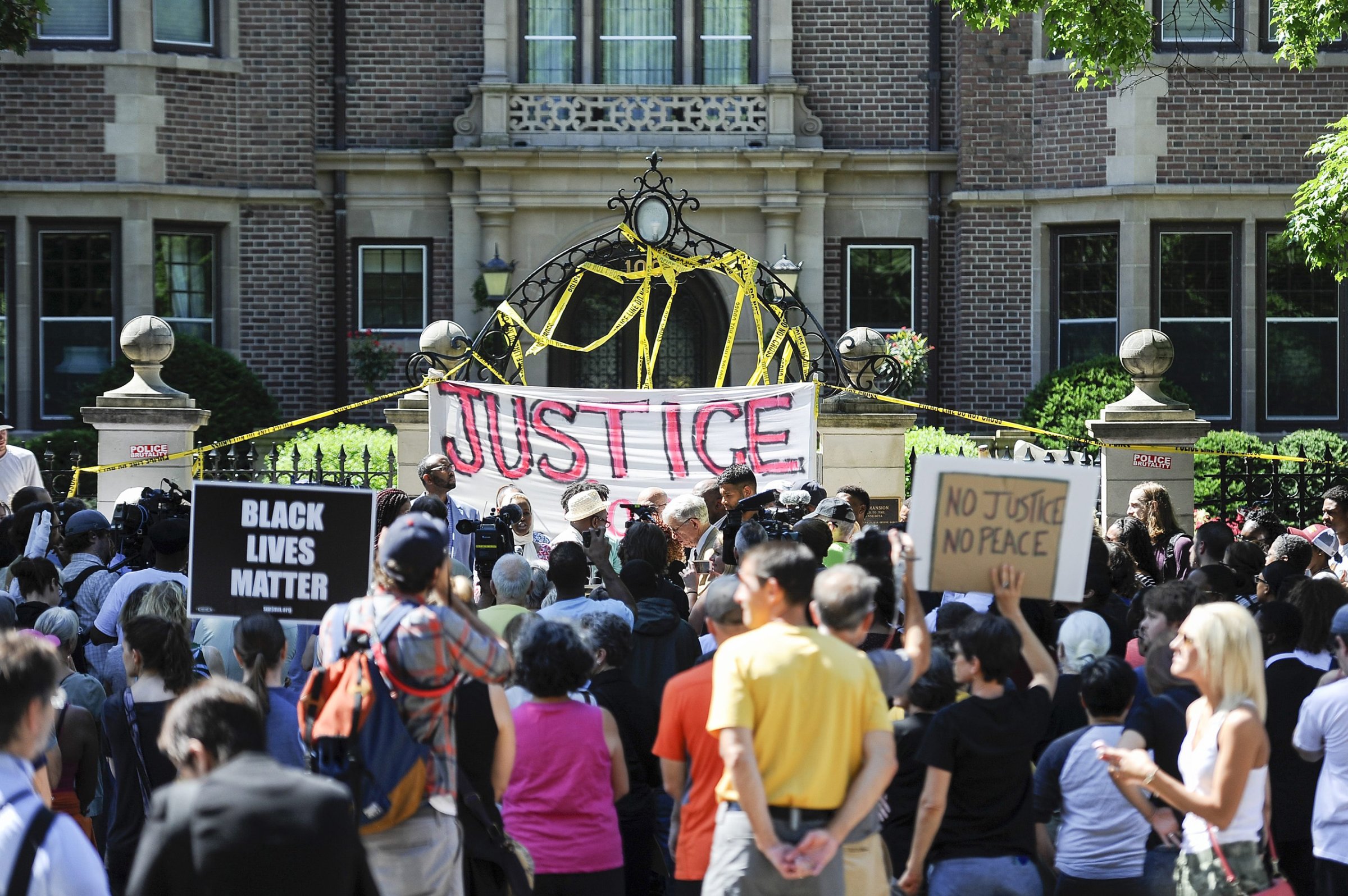
Marilyn Porter is familiar with the Falcon Heights, Minn., neighborhood where Philando Castile was shot by police last week. Around 2009, she briefly took a job with UPS that took her through the St. Paul suburb on her way home each night.
“Literally, I probably got stopped almost every night, and it was always, ‘Where are you going and where are you coming from?’” says Porter, 64, a black St. Paul resident and architectural consultant. “It was almost like they were trying to intimidate me. It happened so often it got to the point that I would just pull to the side, because once we made eye contact, they were going to put the lights on anyway.”
The fatal shooting of Castile by a St. Anthony police officer July 6 has become a focal point for black communities nationwide who have long criticized law enforcement for overzealous policing. But for black communities around St. Paul, Castile’s death and the dramatic aftermath posted to Facebook Live by his girlfriend confirmed something they have claimed for years: that police departments around the Twin Cities unfairly target black residents through excessive traffic stops.
A week after the shooting, St. Paul residents are still mourning Castile, his death rekindling memories in the black community of the death of Jamar Clark, a black 24-year-old who was fatally shot by Minneapolis police in November 2015. His death sparked weeks-long protests around the Twin Cities. The two officers responsible for Clark’s death were not charged. Similarly, protesters have been demonstrating around St. Paul calling for justice for Castile and criminal charges against the officer involved.
Read more: What to Do if You Get Pulled Over By a Cop and You’re Legally Armed
Last week, Castile was pulled over along Larpenteur Avenue in Falcon Heights, a predominantly white suburb northeast of St. Paul, for what has been described by his girlfriend Diamond Reynolds as a broken taillight. In the Facebook Live video, Reynolds says that Castile told the officer he had a concealed carry permit and a firearm in the car and was reaching for his identification when he was shot by St. Anthony police officer Jeronimo Yanez. The officer’s lawyer says Yanez pulled Castile over in part because he matched the description of a robbery suspect.
“I was shocked it was being videotaped as it was happening,” says Khulia Pringle, 39, a St. Paul resident. “But I wasn’t shocked that it happened. What we have is uncontrollable traffic stops that black folks are more likely to have.”
Pringle, an organizer for the non-profit Students for Education Reform, says she believes that because crime in St. Paul is relatively low, “these cops have nothing better to do. They’re stalking and they’re sitting and they’re picking who they stop.”
Those concerns seem borne out by a 2003 study on traffic stops in the region, which found that blacks in five Twin Cities suburbs (which did not include Falcon Heights or the St. Anthony police department) were stopped 310% more than expected based on their estimated share of the area’s driving population. The study also found that black residents were more likely to be searched due to “officer safety,” a rate that was 28.6% higher than the statewide average.
Myron Orfield, a University of Minnesota professor who authored the study, says that region, which surrounds Falcon Heights, had the largest disproportionate rate of traffic stops of any in the state and says he doubts its rates are different or have changed over the last decade.
“There’s nothing that leads me to believe that anything there would be different,” Orfield says. “Maybe they’re worse.”
Read more: Philando Castile Shooting Had ‘Nothing to Do With Race,’ Officer’s Attorney Says
In its 2015 annual report, the St. Anthony Police Department, which contracts with Falcon Heights, said that one way that “the patrol division contributes to our goal of suppressing and deterring criminal activities is through our active enforcement of traffic laws,” noting 2,300 traffic citations in 2015 and 700 arrests in Falcon Heights, a figure Orfield says is extremely high for the town of roughly 5,600.
Court records obtained by KARE11, a Minneapolis-St. Paul NBC affiliate, show that Castile had 79 charges that came from traffic stops, 48 of which were dismissed and 31 in which he was found guilty of various misdemeanors.
“Where Phil was killed, this is an area that historically has been an area that black people, people of color, avoid,” says Rashad Turner, the founder of Black Lives Matter St. Paul who says he grew up with Castile and played basketball with him as a kid. “When they see us, they see us as an opportunity to go fishing.”
The St. Anthony Police Department did not respond to multiple requests for comment.
Steve Linders, a spokesperson for the St. Paul Police Department, which also did not participate in the 2003 study, says that his department does not track race in traffic stops.
“Our officers patrol the city and take efforts to keep people safe and respond to calls for service,” Linders says. “They make proactive stops when they need to to keep the city safe.”
Turner, the Black Lives Matter leader, says his group is working to compile independent traffic stop data around St. Paul, as well as advocating for thorough probes into police-related deaths, including Castile’s.
“We’ve seen rushed investigations not lead to convictions,” Turner says. “Do a thorough investigation. At the same time, stay focused on the systemic issues that allow these things to keep happening.”
More Must-Reads from TIME
- Cybersecurity Experts Are Sounding the Alarm on DOGE
- Meet the 2025 Women of the Year
- The Harsh Truth About Disability Inclusion
- Why Do More Young Adults Have Cancer?
- Colman Domingo Leads With Radical Love
- How to Get Better at Doing Things Alone
- Michelle Zauner Stares Down the Darkness
Contact us at letters@time.com